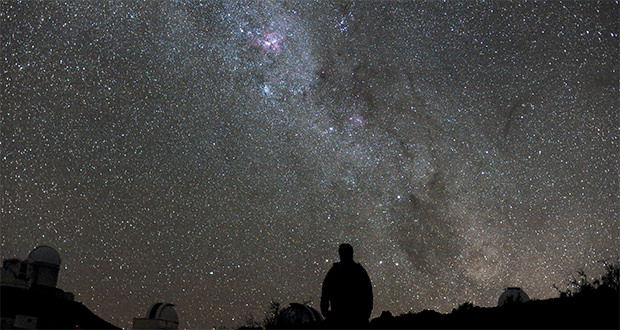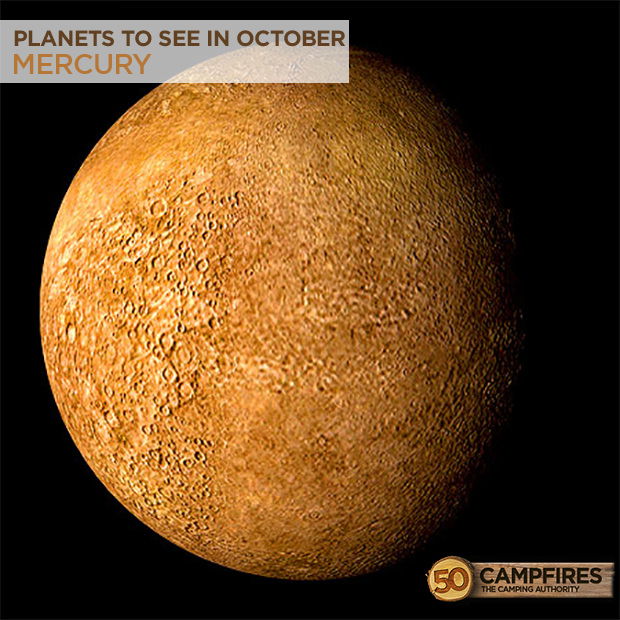

Some of the greatest stargazing opportunities in North America come around during the fall season, and this even includes the other planets in our solar system. They may only look like dots mixed in above the stars, but in reality they are beautiful reminders that there is far more to reality than plane Earth. October in particular brings out a couple of planets that are rare occurrences in the night sky during the rest of the year.
Only five of Earth’s planetary neighbors are actually visible during 2014, but there are two in particular that you’ll be able to see in October.
Uranus
This elusive planet is difficult to see, but on October nights with very dark, clear skies it is certainly possible. The best time to search for it is in early October, when this massive ice and gas planet moves into alignment with Earth. If you’re lucky, you’ll be able to make out its rings (which often appear as just one, singular ring). Many observers have also been able to make out any of its five major moons, known to Earth’s astronomers as “Miranda”, “Ariel”, “Umbriel”, “Titania”, and “Oberon”, respectively (interestingly, all are named after Shakespeare characters). These moons often appear to be rather dark in the night sky, but this can actually help you distinguish them from the surrounding stars.
Uranus can appear white to the naked eye, but look closely and you’ll be able to make out a bluish glow. It also appears larger than many surrounding stars, which should help with identifying it in the night sky.
A little more about this interesting planet — Uranus is actually about 14.5 times the size of little planet Earth, but in the night sky it just appears to be a small blue orb. Because of its distance from the sun, it takes Uranus about 84 Earth years to complete one rotation around the sun. In addition to the moons already discovered, many scientists and astronomy enthusiasts believe there may be more lurking in Uranus’ shadows.

Mercury
The end of the month will bring about the appearance of another planet, this time one much closer to Earth. This is the smallest known planet in our solar system and has practically no atmosphere. This planet also is the closest one to the sun, meaning it is very hot! The only planet between Mercury and Earth is Venus.
When viewed in the night sky, Mercury can appear to be very bright. In fact, this planet almost looks just like a very bright star, especially to the night sky. It is far easier to observe than Uranus is, although it is still a bit more difficult to observe than certain other planets, like its neighbor, Venus. When looking for Mercury, look for a bright object that generally rides lower on the horizon. Like stars, it does usually appear to be white in color, but it can also take on an orange-ish or pale reddish appearance when looked at closely.
Mercury has no known moons, so don’t be surprised when you can’t make out any objects surrounding it in the night sky. And as for another interesting fact about this tiny planet is that it has an extremely high density (it’s a rocky, solid planet made up of mostly metallic and silicate materials). In fact, the only planet that has a higher density than Mercury is planet Earth itself!

Planet Viewing Tools
You can always just go and stare at the night sky without the help of any instruments (and depending on where you are, you can still see a lot), but when it comes to searching for planets its far better to have some tools. Both Uranus and Mercury can actually be observed by the naked eye, but without any visual tools they are often difficult to distinguish from stars. A telescope is ideal, but binoculars can do wonders as well. For optimal planet viewing opportunities, head outside on a clear night with no clouds in sight. Its also best if you go to an area with as little light pollution as possible.
Don’t be discouraged if you can’t find these planets right away. Even skilled astronomers and stargazing enthusiasts with years of experience often spend hours staring at the sky in search of things. If you’re really having difficulty, however, it may help to look at some star charts (also called “finder charts” when it comes to planets) from websites like nakedeyeplantes.com, in-the-sky.org, or theskylive.com. And of course, searching with family and friends always ups the likelihood that you’ll spot something cool!









